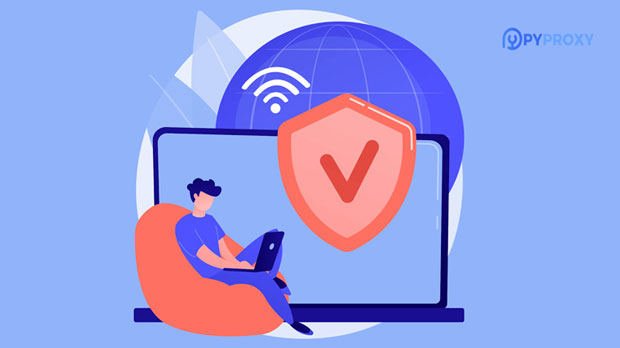In recent years, residential ip proxies have gained widespread popularity for various reasons, including enhanced privacy, security, and the ability to bypass geo-restrictions. However, one of the common concerns when using such proxies is the potential impact on internet speed. residential proxies, unlike data center proxies, route internet traffic through real residential addresses, which may raise concerns about whether they can affect the overall browsing experience. In this article, we will explore how using residential IP proxies can influence internet speed and analyze the factors involved. What Are Residential IP Proxies?Residential IP proxies are a type of proxy server that uses real IP addresses assigned to homeowners by Internet Service Providers (ISPs). These IP addresses are linked to physical locations, making them more legitimate and less likely to be flagged as proxies by websites. Unlike data center proxies, which are typically hosted in large data centers, residential proxies are distributed across the globe and appear to be real users connecting to the internet.While this feature provides benefits such as improved anonymity and the ability to access region-locked content, it also introduces several variables that could affect internet performance.How Residential Proxies Can Impact Internet SpeedWhen using residential proxies, the speed of your internet connection may be affected by several factors. Understanding these factors is crucial for evaluating the potential performance trade-offs.1. Latency and Routing DistanceThe primary factor that can affect speed is latency. Residential proxies rely on real IP addresses, which means the data must be routed through an additional layer, often involving a longer path than traditional direct connections. Depending on the location of the proxy server, the data may have to travel greater distances, causing a delay in transmission. This increased routing distance can introduce higher latency, leading to slower internet speeds.For example, if the residential proxy server is located far away from the user’s physical location, the round-trip time for data to travel to and from the proxy server may increase, resulting in slower response times and slower browsing speeds.2. Bandwidth LimitationsAnother factor that can influence speed is bandwidth. Residential proxy providers typically offer limited bandwidth compared to data center proxies. Since residential IPs are shared among multiple users, bandwidth is often divided between all active users on the network. This sharing can result in congestion, particularly during peak usage times, causing slower internet speeds.Residential proxies generally offer lower bandwidth, which can be a significant disadvantage if you require high-speed internet for activities such as video streaming, online gaming, or large file downloads. This can be more noticeable when the proxy provider has a large user base, which increases the demand for available bandwidth.3. Proxy OverheadUsing a proxy introduces additional processing overhead. Residential proxies work by redirecting your internet traffic through another server before it reaches its final destination. This added step increases the amount of time it takes for your data to be processed and can contribute to slower speeds. While this overhead is generally small, it can be noticeable in certain use cases where low latency and high performance are critical, such as real-time applications or high-frequency trading.4. Proxy Provider QualityThe quality of the residential proxy provider can also significantly impact internet speed. Not all proxy providers offer the same level of service, and the infrastructure behind the proxies can vary widely. High-quality proxy providers may have better infrastructure, optimized routing paths, and fewer users per IP address, leading to faster speeds. Conversely, low-quality providers may have overloaded proxies or inefficient routing paths that result in poor performance.Additionally, some residential proxy providers may offer enhanced features, such as dedicated or exclusive IP addresses, which can improve speed by reducing congestion. Therefore, the choice of provider can play a crucial role in determining how much internet speed is affected.5. Type of Usage and Traffic DemandsThe impact of residential proxies on speed also depends on the type of activities you perform while using them. For casual browsing or accessing region-locked content, the speed impact may be minimal, as these activities are not very bandwidth-intensive. However, if you are engaging in activities that require high-speed internet, such as HD video streaming, online gaming, or large-scale data scraping, you may notice a more significant slowdown.Residential proxies may also struggle to handle high-traffic loads, especially when there is an increased demand for specific websites or services. This can result in slower speeds, as the proxy servers may not be able to handle the high volume of requests, leading to bottlenecks and delays.6. ISP Throttling and Network CongestionInternet Service Providers (ISPs) may also play a role in affecting internet speed when using residential proxies. Some ISPs may throttle or restrict the bandwidth for specific types of traffic, including proxy usage. This throttling can reduce speeds, making it harder to achieve optimal performance.Furthermore, if the residential proxy service is used by multiple users from the same location or through the same ISP, network congestion can occur. When too many people are using the same IP address or range of addresses, it can cause slower speeds for all users, similar to how a shared internet connection can slow down when too many people are online at the same time.How to Minimize Speed Loss When Using Residential ProxiesWhile residential proxies can affect internet speed, there are several strategies you can employ to minimize the impact on your browsing experience.1. Choose a Reliable Proxy ProviderTo ensure optimal performance, it is essential to choose a high-quality residential proxy provider. Look for providers that offer fast and reliable proxies with a strong infrastructure. Providers that offer dedicated IPs or high-quality routing will help mitigate latency and bandwidth issues, ensuring faster speeds.2. Optimize Proxy LocationsSelecting proxy servers that are closer to your physical location can reduce latency and improve speeds. Many proxy providers allow you to choose the location of the proxy server, so try to pick one that is geographically closer to your own region.3. Monitor and Adjust Usage PatternsBy monitoring your internet usage and adjusting your activities accordingly, you can minimize the impact of residential proxies on speed. For example, if you are engaged in high-bandwidth activities, consider using data center proxies instead of residential ones to achieve better performance.Using residential IP proxies can impact internet speed, but the extent of this impact depends on several factors, including latency, bandwidth limitations, proxy overhead, the quality of the provider, and the type of internet usage. While residential proxies offer advantages such as anonymity and the ability to bypass geo-restrictions, it is essential to weigh these benefits against the potential speed trade-offs. By choosing a reliable provider, optimizing proxy locations, and adjusting usage patterns, users can minimize the negative effects on internet performance.In conclusion, while residential proxies may cause some slowdown in internet speed, the impact can be managed with careful selection and usage. For those who prioritize privacy and security, the benefits often outweigh the drawbacks. However, for activities that demand high-speed internet, alternatives such as data center proxies may offer better performance.
May 15, 2025



































































